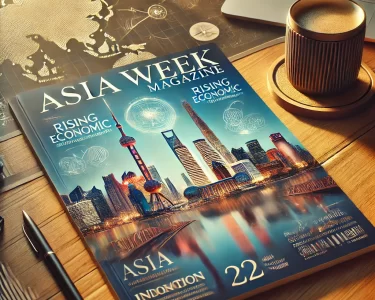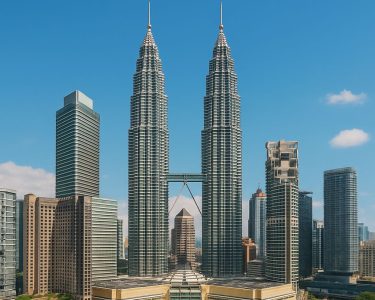India, a land of immense diversity and cultural heritage, is home to one of the most vibrant and complex societies in the world. Rooted in traditions that date back thousands of years, Indian society embodies a unique blend of ancient customs and modern influences. The ways of living in India reflect the country’s multifaceted character, shaped by history, religion, social norms, and rapid economic development. This blog delves deep into the fabric of Indian society, highlighting its structure, values, family system, festivals, cuisine, clothing, and evolving modern lifestyles.
The Social Structure of Indian Society
Indian society is deeply stratified and diverse, with numerous ethnic groups, languages, religions, and social hierarchies coexisting. Traditionally, the caste system played a significant role in determining social status, occupation, and even personal interactions. While modern India has made significant progress in breaking down caste barriers through education and affirmative action, social stratification still lingers in some parts of the country.
Another defining aspect of Indian society is the rural-urban divide. Nearly two-thirds of India’s population resides in rural areas, where traditional customs and agrarian lifestyles still hold strong. Urban centers, on the other hand, reflect a fast-paced, cosmopolitan culture influenced by globalization and technological advancements.
The Family System: The Core of Indian Life
Family is the cornerstone of Indian society. Unlike Western societies that emphasize individualism, Indian culture places immense importance on familial bonds. The joint family system, where multiple generations live under the same roof, has been a longstanding tradition, fostering strong relationships and collective responsibility. However, with increasing urbanization and modernization, nuclear families are becoming more common, especially in metropolitan cities.
Marriage remains a sacred institution in India, often arranged by parents and elders. Although love marriages are gradually gaining acceptance, arranged marriages still dominate, with an emphasis on familial compatibility, cultural background, and social status. Dowries, once a widespread practice, are now legally prohibited but continue in some communities.
Festivals and Celebrations: The Spirit of India
India is often called the “Land of Festivals” due to its rich tapestry of cultural and religious celebrations. Every region and community has its own set of festivals that bring people together, reinforcing the spirit of unity in diversity. Some of the most prominent festivals include:
- Diwali – The festival of lights, celebrated by Hindus across the country with lamps, sweets, and fireworks.
- Holi – The festival of colors, marked by joyous gatherings, music, and vibrant powders.
- Eid-ul-Fitr and Eid-ul-Adha – Celebrated by the Muslim community with prayers, feasts, and charity.
- Christmas – Observed by Indian Christians with midnight masses and festive meals.
- Pongal, Bihu, Makar Sankranti, and Onam – Harvest festivals that honor agricultural traditions.
These celebrations transcend religious boundaries and are often enjoyed by people of all faiths, reinforcing India’s inclusive culture.
Indian Cuisine: A Culinary Delight
Indian cuisine is as diverse as its culture, with each region offering unique flavors and specialties. The variety in Indian food stems from the use of aromatic spices, fresh ingredients, and traditional cooking techniques passed down through generations.
- North Indian Cuisine: Characterized by rich gravies, tandoori dishes, and staples like wheat-based bread (roti, naan) and rice. Popular dishes include butter chicken, dal makhani, and biryani.
- South Indian Cuisine: Known for its light yet flavorful dishes like dosa, idli, sambar, and rasam, often served with coconut-based chutneys.
- Eastern and Northeastern Cuisine: Features dishes influenced by Tibetan, Bengali, and Assamese flavors, with an emphasis on fish, rice, and mustard-based gravies.
- Western Indian Cuisine: Includes Rajasthani dal baati churma, Gujarati dhokla, and spicy Maharashtrian vada pav.
Street food is an integral part of Indian culinary culture, with vendors serving delicacies like pani puri, samosas, pav bhaji, and chaat across bustling markets and streets.
Traditional Attire and Evolving Fashion Trends
Indian clothing is a reflection of the country’s history, climate, and cultural values. Traditional attire varies by region and occasion:
- Men’s Clothing: Includes kurta-pajamas, sherwanis, dhotis, and lungis, often worn during festive occasions and weddings.
- Women’s Clothing: Includes sarees, salwar kameez, lehengas, and ghagras, adorned with intricate embroidery, silk fabrics, and vibrant colors.
- Modern Trends: Western attire like jeans, shirts, and dresses are increasingly popular, especially among the younger generation in urban centers. Indo-Western fusion clothing, which blends traditional and modern elements, has gained widespread acceptance.
Education and Work Culture in India
Education is highly valued in Indian society, often seen as the key to upward mobility. The country has a well-established education system, with institutions like the IITs, IIMs, and AIIMS being globally recognized for academic excellence. However, access to quality education remains a challenge in rural areas, leading to disparities in literacy rates.
India’s work culture is a mix of traditional and modern practices. While agriculture continues to employ a large section of the population, the IT sector, business process outsourcing (BPO), and startups have revolutionized employment opportunities. Work-life balance is often a challenge in highly competitive industries, where long hours are common.
Modernization and Changing Lifestyles
With rapid economic growth and urbanization, Indian lifestyles are evolving significantly. The younger generation is embracing global influences in fashion, entertainment, and technology. The rise of social media, OTT platforms, and e-commerce has transformed how Indians interact, shop, and entertain themselves.
At the same time, traditional values still hold strong, with many young Indians balancing modern aspirations with cultural roots. Yoga, Ayurveda, and holistic living practices continue to thrive, attracting not just Indians but people worldwide.
Conclusion
Indian society is a unique confluence of tradition and modernity, where ancient customs coexist with contemporary trends. The ways of living in India are deeply influenced by familial ties, religious beliefs, social structures, and economic progress. As India continues to evolve, its society remains a vibrant mosaic of cultures, reflecting resilience, adaptability, and an enduring spirit of unity in diversity. Whether through its festivals, cuisine, fashion, or changing urban landscape, India continues to captivate and inspire the world with its rich heritage and dynamic way of life.




